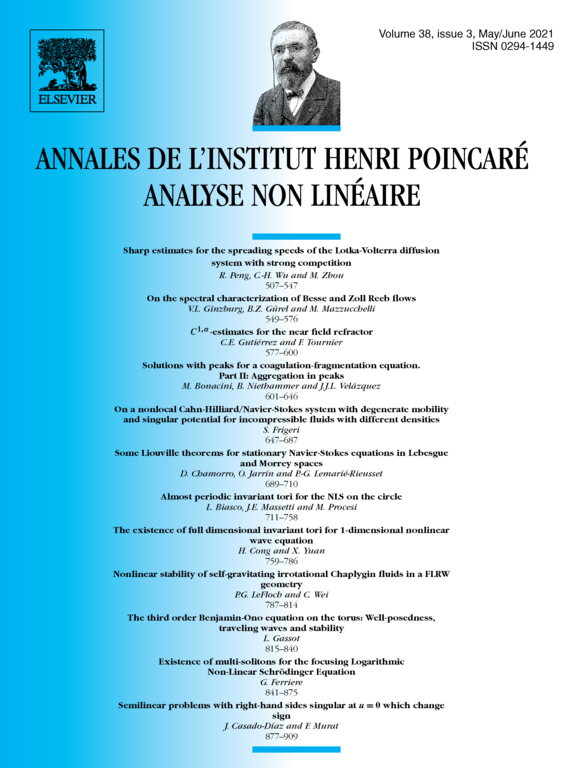Existence of multi-solitons for the focusing Logarithmic Non-Linear Schrödinger Equation
Guillaume Ferriere
IMAG, Univ Montpellier, CNRS, Case courrier 051, Place Eugène Bataillon, 34090 Montpellier, France

Abstract
We consider the logarithmic Schrödinger equation (logNLS) in the focusing regime. For this equation, Gaussian initial data remains Gaussian. In particular, the Gausson - a time-independent Gaussian function - is an orbitally stable solution. In this paper, we construct multi-solitons (or multi-Gaussons) for logNLS, with estimates in . We also construct solutions to logNLS behaving (in ) like a sum of Gaussian solutions with different speeds (which we call multi-gaussian). In both cases, the convergence (as ) is faster than exponential. We also prove a rigidity result on these constructed multi-gaussians and multi-solitons, showing that they are the only ones with such a convergence.
Résumé
On considère l'équation de Schrödinger logarithmique (logNLS) en régime focalisant. Pour cette équation, les données initiales gaussiennes restent gaussiennes. En particulier, le Gausson - une fonction gaussienne indépendante du temps - est une solution orbitalement stable. Dans cet article, nous construisons des multi-solitons (ou multi-Gaussons) pour logNLS, avec estimées dans . Nous construisons également des solutions à logNLS se comportant (dans ) comme une somme de solutions gaussiennes avec différentes vitesses (que nous appelons multi-gaussiennes). Pour chaque cas, la convergence (pour ) est plus rapide qu'exponentielle. Nous prouvons également un résultat de rigidité sur ces multi-gaussiennes et multi-solitons construits, en montrant que ce sont les seuls avec une telle convergence.
Cite this article
Guillaume Ferriere, Existence of multi-solitons for the focusing Logarithmic Non-Linear Schrödinger Equation. Ann. Inst. H. Poincaré Anal. Non Linéaire 38 (2021), no. 3, pp. 841–875
DOI 10.1016/J.ANIHPC.2020.09.002